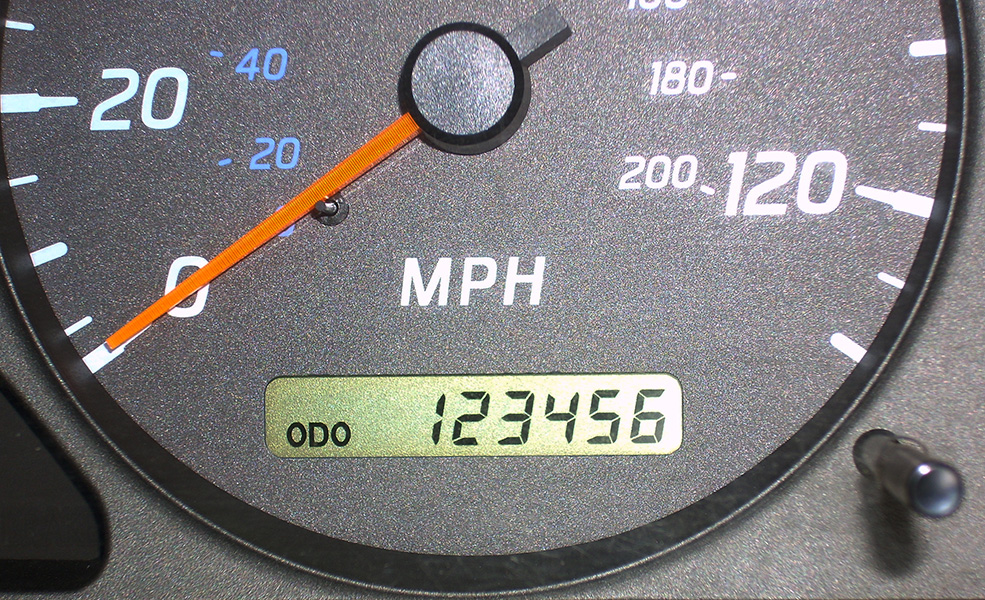A Complete Guide to Car Mileage Allowance
Back to all Small Business guides

Using your own car for business travel can be expensive, with fuel, wear & tear, and insurance just some of the costs to consider. It can also be confusing to know what can and can’t be claimed back, particularly which journeys are eligible and how much you can claim. So, what is the car mileage allowance, and how can you claim back what’s due while staying firmly within HMRC’s rules?
What is a car mileage allowance?
Firstly, let’s be clear about what the car mileage allowance is. The payment is designed to cover the cost of fuel, insurance, road tax, and general wear and tear when using your vehicle to make business journeys. The amount paid will depend on the distance travelled and the vehicle used. The vehicle involved can be a motorbike, car, van or bicycle, and reimbursement will usually be on a rate per-mile basis.
What journeys can mileage be claimed on?
If a journey was made for purely business reasons, you are entitled to claim mileage based on HMRC rules. This means trips such as travel between your workplace and clients, suppliers or events; travelling between temporary workplaces or different offices; and travelling from home to another workplace if ‘home’ is your permanent workplace can all be claimed back.
It should be noted that commuting from home to your usual workplace does not count as a business journey, nor can you claim back any trips that are clearly not for business purposes. Travel that is for a private purpose also can’t be claimed even if an aspect of work is included, such as making calls or sending emails.
How much can be claimed?
While it may seem daunting having to work out the costs associated with buying, using and maintaining your vehicle for business travel, the good news is that you can use simplified expenses to claim a flat rate for mileage instead. Simplified expenses can be used by sole traders and business partnerships that don’t involve a limited company. Using this scheme, you can claim back costs based on the Approved Mileage Allowance Payment rates. So, for the first 10,000 miles in a car or goods vehicle, the flat rate is 45p per mile; after 10,000 miles, this drops to 25p. For motorcycles, the rate is 24p no matter how far you travel, and for bicycles, it’s 20p.
So, if you travel 12,000 miles a year for business, you can claim 10,000 miles at 45p and 2,000 miles at 25p, equalling a total claim of £5,000. You can also claim an extra 5p per mile if you travel with another passenger from the same company.
These rates also apply to employees who use their car for business journeys. They are intended to cover fuel, servicing and repairs, maintenance, depreciation, insurance and road tax. They do not cover road tolls, parking charges, congestion charges, speeding, or parking fines.
Actual vehicle costs claim
If you prefer not to use the simplified accounting method, you can choose to claim all the specific expenses associated with driving your personal vehicle for business purposes. To do this, you must keep all relevant receipts and invoices to prove you can make a claim. This will include receipts for fuel, servicing and repairs, insurance, breakdown cover and any other relevant expenses.
You’ll need to document all business mileage, recording the date, start and end addresses, and the total distance. If you’re using the same vehicle for personal and business travel, you must keep records of both to calculate the work percentage. You should keep these records from your applicable tax submission for at least five years. While this is a more time-consuming method, it can be worthwhile if your vehicle is expensive.
How do I claim mileage back when self-employed?
You can include mileage information on your self-assessment form each year when self-employed, but you must keep compliant records as proof. This includes maintaining a mileage log, which should include the date of your journey if it is a personal or business-related journey; the start and end addresses, including postcodes; and the total number of miles driven for the trip.
How can employees claim mileage allowance?
There are a few ways that employees can claim their mileage allowance payments. A good option is to have a mileage allowance claim form that records information such as the number of miles driven, the date of each journey and the business purpose of the trip, that needs to be filled in after each trip. Payments can then be made either in one lump sum or monthly. There’s no need to pay tax on HMRC mileage allowance payments as they’re a refund of tax already paid. However, if, as an employer, you pay less than the Approved Mileage Allowance Payment rates, employees can claim the difference in mileage tax relief. If you give more than the AMAP rates, this will be classed as a taxable benefit and so will be taxed.